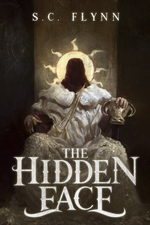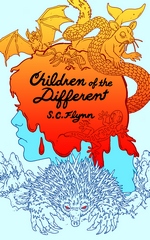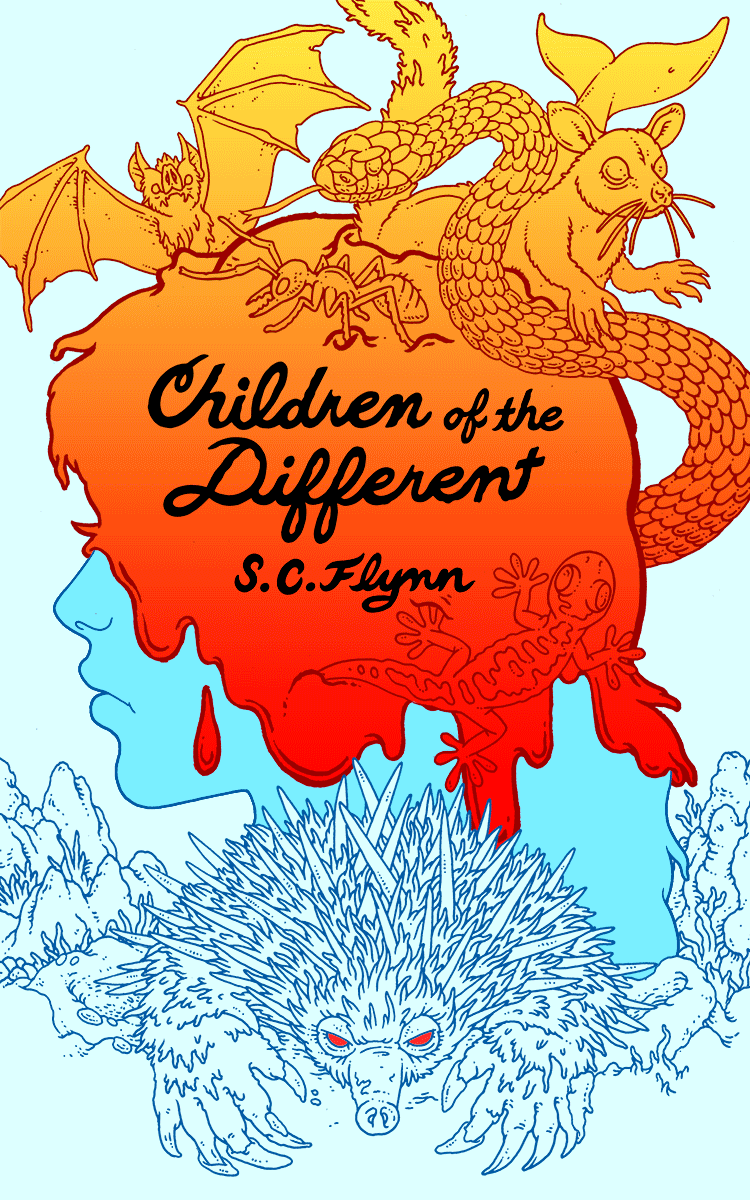 The Hidden Face
The Hidden Face
by S.C. Flynn
Series: Fifth Unmasking, #1
Kindle Edition, 350 pg.
The Hive, 2017
Read: November 14 – 15, 2017

There’s so much of the world-building, the overall mythology and political structure of this book that drives the plot and is given in bits and pieces to the reader, that I’m having a hard time knowing how talk about it without taking away anything from your experience in reading the book.
Essentially, you’ve got Dayraven, returning to the Emperor’s court from being a political hostage for 15 years — he’s pretty smart, a better than average fighter, and the son of a legendarily great warrior. He’s been returned to the court at a pivotal time, and he’s also supposed to be meeting his former teacher for reasons he doesn’t understand, but seem possibly more important.
One of those reasons is to be teamed up with Sunniva, a woman making her way through the world disguised as a man to make it easier for her to move freely as she searches for her missing father. I really liked her — from her memories of a childhood where she’d get bored playing the way the other kids wanted to, so she’d make up her own stories of battle and gallantry, to her dealing with her phobias, to her grit, determination, and compassion. She’s not much clearer on why she’s been teamed up with Dayraven, but jumps in with both feet, certain that it’s the right thing to do.
They have puzzles to solve, clues to piece together — which lead to fights with mercenaries, legendary criminals, a conspiracy or two, and others, while they’re trying to piece together more of the clues which should point the way to the Fifth Unmasking. Don’t worry, you’ll find out what that means as you read the book. On the one hand, none of this story is new to you — you’ve read all these elements before. But the way that Flynn has assembled them, and the way he executes them are pretty novel and are interestingly entertaining.
When we first meet the Emperor, I wasn’t sure how I was supposed to feel about him — whether he was supposed to be funny, if I was supposed to pity him, or something else entirely. If you react similarly, hang in there, and you’ll learn that both reactions are wrong — and you’ll likely end up really liking the Emperor.
There’s a very Sméagol-y character, a few clearly villain-ish characters, and a pretty cool mercenary to round out the cast. All in all, especially by the time we get to the end of the novel and we understand them all pretty clearly, are as strong a collection that you can ask for.
Flynn does do something that it bugs me so much when Fantasy authors do — he uses words/names/ from English/our world to mean something alien in their world. FOr example, the kingdom of Faustia results in the adjective “Faustian.” Which is used a lot, and each time I had to remind myself that he didn’t mean anything like what is usually meant. It’s pretty distracting. Particularly in the opening chapters there’s a sentence or two of dialogue that made me roll my eyes. But it’s not something that detracts too much from the story or, really, makes up that much of the dialogue. My most significant area of criticism is the way that Flynn unspools the mythology for the reader — I think he could have done it a little faster and clearer to get the reader on board with the theology/government of this world. Is it possible that I was being particularly dense this day? Yes. Is it possible that other readers will pick up on things a lot better than I did? Yes. But I don’t think so — I think it was Flynn trying to avoid an info-dump and to dole out the information to the reader at his pace. Which I absolutely endorse, I just think he could have done it a smidge faster.
I’m not sure, but I can’t think of many fantasy novels that I’ve read lately that are as short as The Hidden Face. This isn’t a selling point or a word of warning, I’m just saying this is short, and fast paced. Flynn crams a lot of story into this book and does it well. You don’t feel rushed, or that he’s cutting corners — you don’t get the impression he’s doing anything other than telling his story until you stop and think of everything that happens in 350 pages, a good deal of it is what I expected in book 3. I’m not sure how he pulls that off, honestly.
This is a strong, fast and gripping fantasy novel. I cannot wait for the sequel — it’s pretty clear where it’ll start, but I’m not really sure what to expect the story to do after that, and that really appeals to me. The Hidden Face, isn’t perfect, but it’s good — you should give it a try.
Disclaimer: This book was given to me by the author in exchange for my honest opinion, for which I’m grateful, but not so grateful that it colored my thinking.
—–




